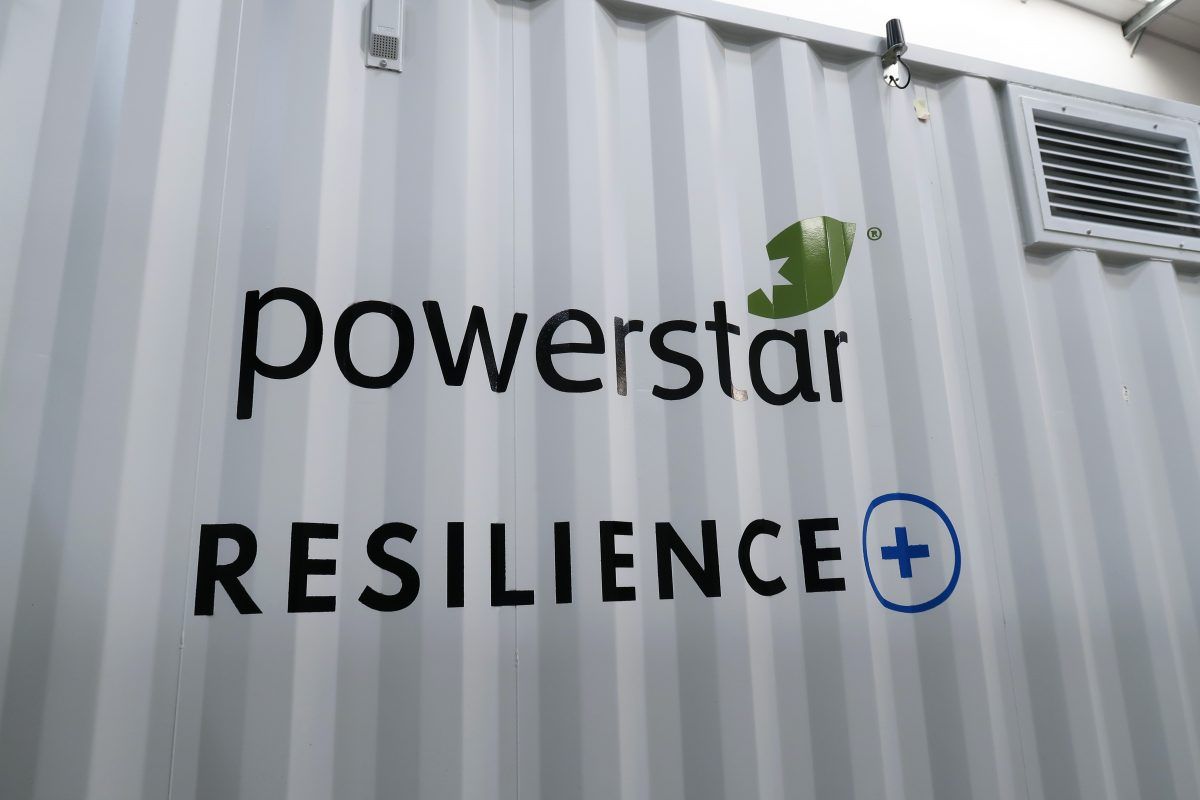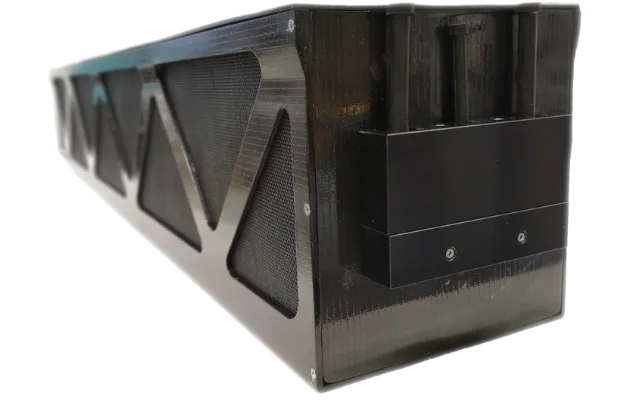Batteries Included: how battery innovations will charge the electric battlefield of the future
)
Demand for lithium batteries is high with global demand set to increase five-fold by 2030 according to some estimates. As the dominant battery chemical in use today, lithium will likely play a big part in the continued electrification of the battlefield as more money is spent on defence, and more equipment is increasingly sophisticated and needs power. Lithium demand is partially due to the rising share of car sales taken up by electric vehicles, which represented 10% of car sales in 2022 and are on track for 30% by 2030. The rise in consumer demand is driving innovation, especially with well-funded disruptors such as Tesla dominating the market for EVs.
The cost of manufacturing batteries, access to critical minerals, storage limitations and longevity are all factors pushing the private sector to develop alternatives which from which defence can benefit. Batteries can also provide great benefits for decarbonising militaries, with batteries one way to remove fossil fuels from the energy system and contribute to the UK MOD’s Sustainable Support Strategy.
Battery applications for defence
Batteries give the assurance of power supply not always available using grid-based power. With the threat of enemy sabotage to electricity grids, soldiers have to maintain energy security to protect their assets and remain operationally secure. As a mainstay of the modern soldier’s equipment package, they are a critical component in ensuring the connectivity and communications availability as well as safety of units on the battlefield:
- Backup power - battery power serves as a backup in case of a power outage or disruption. Industry contributors such as Defence Engage member Powerstar offer reduced energy consumption, emissions and costs involved with storing power portably, ensuring that essential functions can continue without interruption.
- Powering communication devices - modern military operations rely on communication systems for coordination and situational awareness. Radios, encrypted devices, and other communication equipment require a reliable power source to function effectively.
- Operating electronic equipment - the use of electronic devices is widespread on the battlefield, ranging from night vision goggles and laser rangefinders to drones and targeting systems, improving accuracy, real-time intelligence and security.
- Medical equipment – the uninterrupted power supply batteries can supply is critical in emergency situations, and essential for field hospitals powering defibrillators and diagnostic equipment for example.
- Unmanned systems – the use of unmanned aerial vehicles (UAVs) and ground-based robots is growing but they rely on battery power for propulsion, sensor operation, and communication capabilities.
The UK MOD Sustainable Support Strategy also points to challenges of operating in harsher, hotter environments where power to cool batteries will be key. Agile onsite additive manufacturing, the power needed for EVs and aerial platform fleets, and power for AI data processing will all use significant amounts of power directly and will also increase the power needed for cooling systems.

Image source: Powerstar
How batteries are satisfying the hunger for efficient energy
Light-weight alternatives
The heavy reliance on batteries comes at the cost of weight, which represents both a physical burden upon soldiers, vehicles and equipment, and energy consumption. Often the more energy or range needed, the heavier the battery.
‘When one considers that a modern soldier will carry equipment weighing 30-50kg, of which as much as 25% can be batteries, the need to reduce this burden becomes ever more pressing’, Thales
This burden is prompting industry to develop lightweight and efficient battery solutions for personnel and platforms. In the US, the Army Research Office has funded a project which seeks to develop ‘a promising new cathode and electrolyte system that replaces expensive metals and traditional liquid electrolyte with lower cost transition metal fluorides and a solid polymer electrolyte’. One platform-based solution to the weight-burden of current batteries is lithium-sulphur. The UK has been at the forefront of lithium-sulphur battery innovation, which promises to provide a lighter battery for vehicles, at a significantly reduced price.
The Financial Times has reported how Tesla is innovating with the shape, manufacture and weight of batteries: its cylindrical 4680 battery cells can supply five times more energy than its regular car batteries, and in using new material including aluminium along with fewer parts, they are cheaper and lighter-weight. What’s more, Tesla is ramping up battery cell production, not only shoring up its supply chain but also challenging the small amount of businesses that dominate battery production around the world. This means such revolutions to batteries could become wide-spread more quickly, with the impact reaching defence as these advancements become standard.
Defence Engage member Kraken, have developed their innovative Subsea Batteries with what they claim is ‘the best energy-to-weight ratio on the market for pressure tolerant deep sea batteries’. This light-weight offering is important as it allows AUVs to more than double their previous survey endurance, while using the same battery payload volume.

Image source: Kraken’s SeaPower™
Mitigating mineral demand
As a critical mineral in high demand, cobalt has experienced major risks to the security of its supply in recent years. With domestic demand and the availability of electric cars rising, an already strained set of mineral supply lines is under threat. In March 2023, the UK released its Critical Minerals Strategy, noting that cobalt and nickel are under particular strain, yet are integral to the production of many batteries.
Cobalt is important in batteries because it provides high energy density, stable performance, and good thermal and cycling stability. However, there are ethical and environmental concerns associated with cobalt mining, leading to efforts to reduce its use and find alternative materials for batteries. The US Department of Energy has been working with academia and laboratories to develop cobalt alternatives, in the face of environmental and human rights scrutiny of the mines, which are primarily on the African continent.
Other battery chemical alternatives being developed include Sodium-ion, Iron-air, Zinc-based and Lithium-Sulfur. Sodium-ion uses water as an electrolyte, it performs well at low temperatures and are much easier to recycle than many traditional chemical mixes. Iron-air batteries would us a process that oxidises iron to turn iron into rust to produce energy and then the cells are re-oxidised back into iron, allowing 25 times the storage hours of Lithium-Iron. Zinc-based batteries have a low rate of self-discharge, meaning they would be particularly useful for solar applications, whilst Lithium-Sulfur would provide an all-round solution with its low-cost, long-life, high-density features. In the consumer market,
Bacteria could be another such solution for the future, as a team of researchers from Binghampton University in New York have reported their findings regarding a tiny, ingestible battery which could provide power for over a century. According to Interesting Engineering, the money granted from the US Office of Naval Research could help fund a variety of military capabilities in hostile environments and on the battlefield.
In the consumer market, Toyota has recently entered the fray promising to introduce next generation batteries, solid-state batteries and lithium-ion batteries. Solid-state can hold a greater amount of power and are deemed to be a major breakthrough. Currently they are currently costly to develop, with Toyota hoping to bring these to market in 2027-2028, but could indicate a solid-state battery future for defence to capitalise on once it is established.
Batteries to boost Defence decarbonisation
Improved storage options that allow the integration of large amounts of renewable energy into a system would go a long way towards eliminating fossil fuel use. The European Commission has even deemed battery power ‘a key enabler of a low-carbon economy’. The Commission’s reasoning for giving batteries this status is founded upon their ability to balance supply and demand in a variety of circumstances.
Off-grid diesel dependency on fossil-fuelled portable generators, a mainstay of defence operations, is often cited as a big problem. These environmentally detrimental systems provide a consistent flow of power to mobile forces who risk being cut off from national power grids. Batteries with greater density, longer lives and lighter weight could combat the gas-guzzling generators, especially as they can be integrated with sustainable sources such as portable solar panels or turbines.
In a recent article, McKinsey & Company reported upon their predictions for battery technology by 2023 and outlined their resilient, sustainable and circular vision. The report details how a circular battery supply chain could increase the effectiveness of decarbonisation efforts, and in the long term come to see prices fall. After reviewing a variety of battery chemicals and their supply chains, the report predicts that ‘while some battery materials will be in short supply, others will likely experience oversupply, making it more difficult to plan’. This suggests that governments and their MODs will have to coordinate with industry to maintain supply chain integrity.
Strengthening supply chains
On-shoring, ally-shoring and near-shoring battery supply
A recent report acknowledged the sheer reliance of the US upon foreign imports of battery components, suggesting that only 30% of the economic value of each battery in the US market was domestically produced. The importance of lithium to civilian and military battery supplies is widely understood to be a strategic vulnerability. To mitigate this perceived vulnerability, countries are engaging in protectionist policies which seek to on-shore (return industries home), ally-shore (import from preferred international partners) and near-shore (localise imports) their supply chains.
This is evidenced by the UK’s commitment to on-shoring EV battery production to help ensure market stability and availability of such batteries in support of the net zero agenda. Japan and the US recently signed an agreement to ally-shore their critical minerals (many of which are crucial in battery production), in pursuit of supply chains which are at low risk of political disruption. A new US-South Korea agreement for EV batteries seeks to bring a new wave of battery production to the US, ensuring high-level multilateral cooperation to reduce reliance on external imports.
Regulatory shifts, investment and government policy are all smoothing and speeding the way to a more self-reliant, carbon-efficient battery-led future.
Consumer demand, power requirement for technology and industry investment are driving growth and innovation in the battery sector. While demand threatens to outstrip availability, developments in the chemicals, manufacture, cost and supply chains are already underway and will all play their part in batteries solving our power problems and future aspirations.

